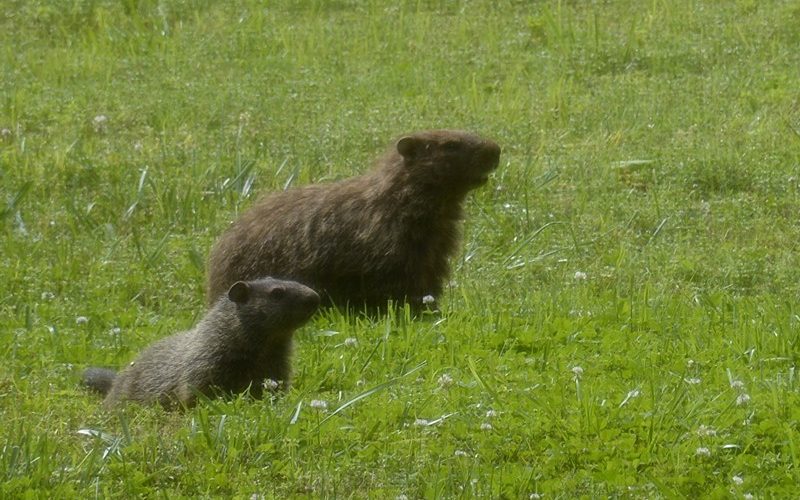Groundhogs are interesting, even when they’re wrong
It’s time once again for that early February day in which a large rodent determines the weather. Throughout the ages of this tradition’s existence, there has sometimes been confusion over it.
Back in 1914 near Fayetteville, 13-year-old Bennie Johnson wrote to his brother that “the groundhog won’t see his shadow next February 2nd because my dog and I killed him.” It was common to eat groundhogs, opossums, rabbits, squirrels and more — and some still eat these animals today. Meanwhile, back at the farm, Bennie’s parents were having a debate over what day Groundhog Day really was. His father claimed that Feb. 14 was Groundhog Day, while his mother claimed that it was actually Feb. 2, and Valentine’s Day was Feb. 14. She was right, of course!
Groundhog Day originates from German-speaking areas of the world where the badger was the forecaster, and the custom spread throughout the United States and Canada from the Pennsylvania Dutch. It is held every Feb. 2, and tradition has it that if the groundhog emerges from his den on this day and sees his shadow, he’ll be frightened into returning underground, and we’ll have six more weeks of winter. If he does not see his shadow, we’ll have an early spring! But this is Northwest Arkansas, where we get spring and winter weather in the same week, so why worry about groundhogs and shadows? (Especially since various studies and entities have concluded that groundhogs make poor forecasters.)
Groundhogs, also called woodchucks, might not predict the weather, but they are fun to watch. They roughly resemble local beavers or South American capybaras, except that groundhogs have tails like bristled hairbrushes. Groundhogs weigh on average 8 pounds and can live as long as 14 years in captivity, but only four or five years on average in the wild.
They’re preyed upon by wolves, coyotes, foxes, bobcats, bears, eagles and even dogs, which can be injured due to the aggressive personalities of groundhogs and their ability to defend themselves with incisors and front claws. They are mostly herbivorous, giving grief to gardeners. They eat grass, berries, dandelions, nuts and, rarely, consume grasshoppers, snails, and insects or animal matter in general. They are usually active in mornings and evenings but can be active night or day depending on the season.
They can swim and climb trees when necessary, but usually run for the burrow if threatened. They’re fantastic diggers and true hibernators, and may build a hibernation burrow for that purpose. In Arkansas, it’s a short hibernation of around six to eight weeks, according to Arkansas Mammals by Sealander and Heidt. Their social lives are not well understood, but we know that they’re territorial.
Mating occurs January through March, and females give birth to two to nine young (averaging four or five). They’re born blind and hairless, totally dependent on their mother for survival. The father leaves the den around spring when the young are born, but may return once they’re old enough to venture out of the burrow. They’re weaned at about 4 weeks old. A mother groundhog waddle-jumping across the grass with her babies bumbling along behind her is a funny and heartwarming sight, even if she’s wrong about the weather.
Amanda Bancroft is a writer, artist, and naturalist building an off-grid cottage for land conservation on Mt. Kessler. She and her husband Ryan blog about their adventures and offer a solar-hosted online educational center on how to make a difference with everyday choices at www.RipplesBlog.org.










